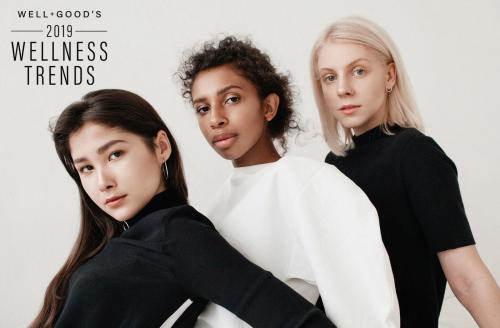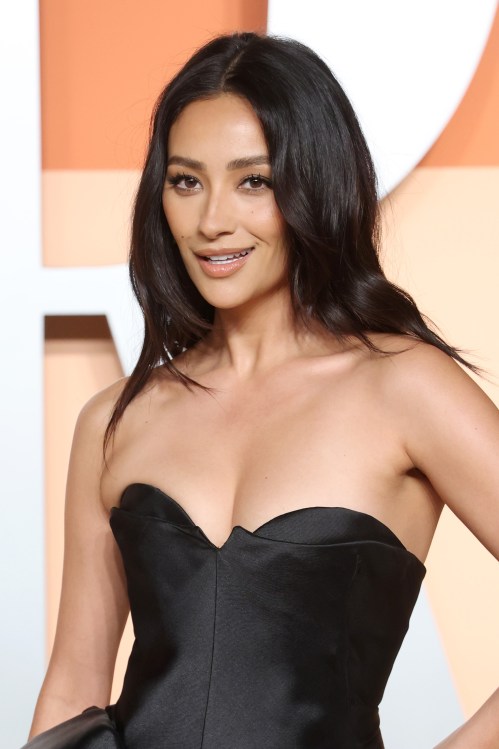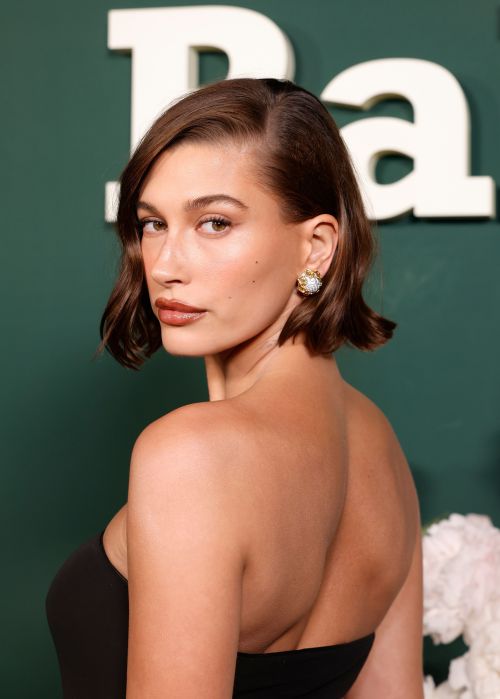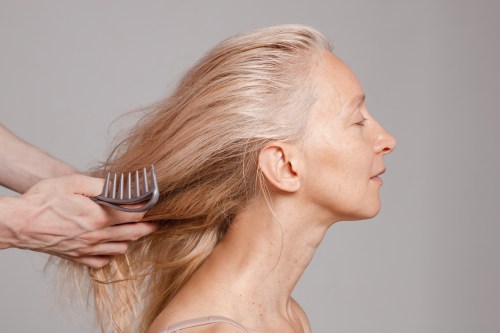Is the beauty industry really as diverse as it should be? Let’s check in
As more- brands begin tackle diversity in the beauty industry, it's time to take a look at where we're succeeding and falling short in representation.

As part of our 2019 Well+Good Trends, we wrote about the positive shift Fenty had on the fashion industry, and ultimately how it would impact how brands speak to diverse consumers. As we march toward the halfway mark of 2019, however, we have to ask ourselves two questions: How far have we really come? What areas could use a bit more improvement?
Let’s start with the wins. We’ve seen the launch of Oribe Highly Textured Collection, gender-neutral makeup from Fluide, a major push from Dr. Barbara Sturm to address the unique needs of darker skin tones in prestige department stores, and more-and-more lines founded by entrepreneurs of color, such as The Lip Bar and Briogeo.
However, issues like natural hair discrimination in the workplace still feel commonplace (though both California and New York recently passed laws against it ). Brands, too, continue to come under fire: On the fashion front, Kim Kardashian West feigned naiveté upon the backlash for her culturally insensitive named “Kimono” shape-wear line (P.S. Japan had a message for her), while Canadian-based beauty brand NiteCapCo claimed its team “invented” the bonnet, a long-standing staple within communities of color.
It’s an odd juxtaposition and enough to make one wonder if change truly happening. To dive deeper, I spoke to industry insiders to see how far they feel this progress has brought us in the skin-care, hair-care, and makeup industries. Here we go.
Makeup
Within the beauty industry, makeup has seen a huge push for diversity in the past couple of years, as brands launch wider ranges of foundations and concealers, with many now clocking in at 40 and 50 shades that are more representative of what skin tones in America really look like. “There’s still a long way to go, but I’m constantly seeing wider shade ranges and more representation in ad campaigns,” shares Brooke Devard Ozaydinli, founder of The Naked Beauty Podcast. “We [women of color] have spending power, so it goes far beyond a trend for companies: It’s in their best economic interest to be more inclusive. Black women spend 80 percent more on cosmetics than our non-black counterparts.”
Despite her veteran industry status, former Glamour senior beauty editor Baze Mpinja sometimes “still can’t believe how drastically the market has changed—for the better—in the past three years,” she tells me. “Even if the motivation is only to be competitive, I think it’s a good thing. I would applaud M.A.C Cosmetics because they have promoted inclusivity since the 1990s—before ‘diversity’ was a marketing buzzword. I’m hesitant to applaud brands who are just now making strides because, um, what took so long?”
“We [women of color] have spending power, so it goes far beyond a trend for companies. It’s in their best economic interest to be more inclusive. Black women spend 80 percent more on cosmetics than our non-black counterparts.” —Brooke Devard Ozaydinli
According to cosmetic chemist Stephen Alain Ko, making diversity inherent in a brand’s DNA begins with the team itself. “Diversity can only come when there are leaders from a broad range of backgrounds,” he explains. “That includes diversity based on ethnicity, background, gender, or sexuality—and all the intersections of those as well.” While much of the market is working to expand and include everyone, older generations are frequently left behind. According to him, “a demographic that’s still largely missing is people of diverse backgrounds, who are past their 30s, 40s, 50s, 60s, and beyond.”
Personally, as a beauty editor of color, I can say firsthand that diverse hires aren’t a “nice-to-have,” they’re a must-have. I’ve been in more situations than I would like to admit that I overwhelmingly felt like a “minority voice” at mainstream publications, despite my vast experience. Without a broad array of voices, life experiences, and diverse perspectives in both junior-level and executive roles, it’s hard to truly bring authentic change across the board.
Hair care
When it comes to hair, YouTube has been a big driver of proving the demographic (and money) is there. One staggering statistic is that, despite making up 14 percent of the total United States population, African American shoppers accounted for $473 million of the $4.2 billion hair-care industry. FYI: That’s over 11 percent of all spending despite being less than one-seventh of the population. “YouTube has played a huge role and has shown how hungry natural-haired women are for information and credible product recommendations, hair-care tips, and styling advice,” explains Mpinja, who’s applauds apps like Swivel Beauty and Yeluchi, which were created as a resource for women of color, by women of color.
Leona Wilson, stylist and owner of LW Salon in New York City, describes the diversification of the hair-care market as a blessing and a curse. “The blessing? The giants took ‘us’ from specialty stores or from small shelf space to major retailers, making it easier for customers to get their hands on what were once considered niche products,” she says. “The mass expansion of the natural hair market forced independent black-owned companies to compete with corporations that previously ignored it.”
“The mass expansion of the natural hair market forced independent black-owned companies to compete with corporations that previously ignored it.” —Leona Wilson
A statistic cited in the Los Angeles Times indicates that almost 71 percent of black adults in the U.S. have worn their hair natural at least once by 2016. Naturally (no pun intended), this caused a big boom in the market. “It’s no surprise that big companies were eager to edge in the market,” adds Wilson. “However, as niche beauty companies started targeting a broader audience of multicultural customers often alienating their original customer base to keep up.”
Despite the high growth of this area, brands needs to ask why this target demo is important to them, and multi-cultural brands looking to expand their target audience should ask themselves if it’s worth the risk to abandon their loyal core and lose revenue.
Instead of larger brands attempting to corner the market, the key takeaway should be mentorship or investment. For example, stories like black-owned startup Mayvenn (a popular hair brand) raising $23 million in venture capital funding are few and far between. It would be encouraging to hear more successes like this, as an alternative to big brands suddenly embracing a demographic they chose to ignore for years.
Skin care
One area with a major opportunity for growth is the skin-care market. “Skin care can be tremendously inclusive by paying attention to ingredients,” says Carlos A. Charles, MD, board certified dermatologist and founder of Derma di Colore. He calls out sunscreen as one product category that is still struggling when it comes to catering to consumers with deeper skin tones.
“Certain thick physical block sunscreen agents are challenging for those with darker skin,” he explains. “As we all know, they can leave the dreaded whitish cast and, when wet, the white cast can even turn purple. Because of this, many people with darker skin don’t like the experience of using sunscreen and will skip it altogether, which is a bad idea.”
“What’s missing from the equation is true research and development geared towards consumers of color.” —Carlos A. Charles, MD
And beyond the necessity for more cosmetically elegant physical sunscreens, there’s a real need for products that address unique concerns in skin of color. For instance, Dr. Sturm found that complexions with deeper skin tones tend have to a thicker and firmer epidermis, but in general, produce more sebum and are more susceptible to hyperpigmentation from acne scars.
These are key findings that should be fundamental in product formulations, and they prove that true research and development geared towards consumers of color is needed across the board by skin-care brands. “What’s missing from the equation is true research and development geared towards consumers of color,” says Dr. Charles. “When this occurs and consumers of color are thought about as more than marketing piece, we will have products with real efficacy—I’m currently working on this right now.”
As with makeup, with demand increasing, this tide needs to change. “Whether or not a formula is harder or easier to make, should be irrelevant,” says Ko. “A brand should face the challenges of formulation to serve their customers.”
Why representation remains a vital piece
Consumers being able to “see themselves” not only provides context clues as to who the brand is for, but also that it works for a multitude of ethnicities. “Often times brands believe if they cater to a black demographic it will alienate their majority white customer base,” says Ozaydinli. “This couldn’t be further from the truth, as has now been proven time-and-time again.”
“Visuals play an enormous role in telling the story for the brand and showing consumers how important they are.” —Carlos A. Charles, MD
According to Ozaydinli, Pat McGrath Labs is “doing a wonderful job of casting gorgeous women with uniquely different looks and skin tones. Often times you see diversity in the more accessible price point brands, like Glossier and Bobbi Brown, but I love to see this high-end luxury cosmetics brand, helmed by a black woman, showcase diversity while being totally aspirational.” Dr. Charles agrees: “Visuals play an enormous role in telling the story for the brand and showing consumers how important they are.”
Representation, as Ozaydinli sees it, extends to all types of beauty being accounted for—including showcasing older models, albino models, and trans models. “I think brands realized they need to feel accessible to be relatable and they need to be inherently diverse,” she explains. “The brands that are targeting younger consumers just get this. It no longer feels forced or like tokenism the way it did a few years ago.”
Above all, trust is a major pillar for any consumer, but particularly to those who have been underserved in the market. “There’s definitely hesitation from women of color toward giant corporate companies that didn’t previously cater to them,” explains Wilson. And while many brands have placed themselves within the conversation, Ko feels that only time will shake out the real intentions from the fake. “At the end of the day, there are more choices for consumers, and hopefully one day ‘consumers’ and ‘consumers of color’ won’t be considered as separate demographics or markets.”
Speaking of checking in on where we are with our 2019 trend predictions: It’s a sneaker world and we’re all just living in it and this is why 2019 has been the year of wellness scams.
Sign Up for Our Daily Newsletter
Get all the latest in wellness, trends, food, fitness, beauty, and more delivered right to your inbox.
Got it, you've been added to our email list.










